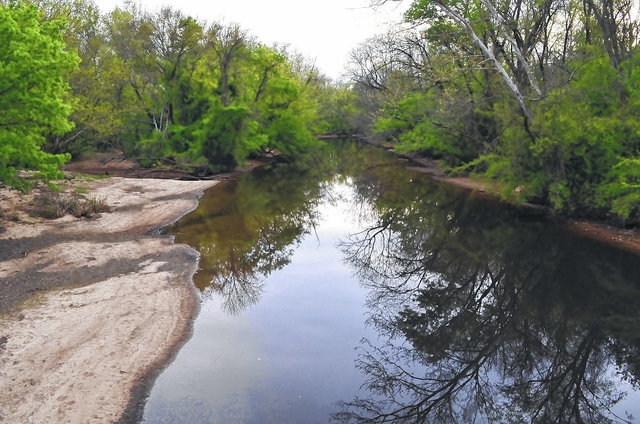ROCKINGHAM — Fluctuating flows in the Pee Dee River have landed it at No. 6 on the list of America’s most endangered rivers.
The health of the river, which is home to a variety of migratory fish and freshwater mussels, is in jeopardy because of upstream operations at the Duke Energy Tillery Hydroelectric Project, according to a report released April 11 by American Rivers.
The Washington, D.C.-based organization says a 40-year operating license — issued to Duke by the Federal Energy Regulatory Commission last April — “fails to require flow releases from the Tillery Dam that would restore and protect 19 miles” of the river from the dam to the Blewett Falls Reservoir.
“The wildlife, water quality and recreational use of the Tillery Reach will suffer for the next 40 years if the license issued by FERC is allowed to stand,” the report states. “Currently, hydropower operations alter river flows more than 50-fold without warning and flows too low to sustain aquatic life are common.”
As Rockingham City Manager Monty Crump put it, “It’s just like turning on a big spigot in an empty bathtub.”
“The flows in the river would never be replicated in nature,” he said. “It’s absurd, it’s obscene.”
Duke Energy spokeswoman Kim Crawford defended the electric company’s management of the river, saying it’s complied with all regulatory requirements.
“The new license issued in 2015 by the Federal Energy Regulatory Commission for the Yadkin-Pee Dee Hydroelectric Project incorporates requirements from state and federal resource agencies, including the Fish and Wildlife Service,” Crawford said in an email. “These requirements are all designed to protect water quality as well as fish and other aquatic species of the Pee Dee River.”
She continued, saying the company “will continue to perform monitoring to provide information on improvements to aquatic life expected from our operations under the new license.”
According to American Rivers, the operations at the Tillery project “alter river flows more than 50-fold without warning and flows too low to sustain aquatic life are common.”
Rockingham City Manager Monty Crump metaphorically compared the flows to “turning on a big spigot in an empty bathtub,” adding that the changes could not be replicated in nature.
Crump said the city has been involved in a legal battle, which is currently before the Fourth Circuit Court of Appeals, over the water flows for nearly 20 years.
Crawford said American Rivers has unsuccessfully litigated water quality issues at the state level and has lost three appeals, the last at the N.C. Court of Appeals.
“It’s been a David versus Goliath situation,” Crump said, adding that the problem could be easily addressed by putting more water in the river on a daily basis. “It’s unacceptable to let that happen to the river for the next 40 years without a fight.”
The other nine rivers listed in this year’s report in order of threat severity are:
• The Apalachicola-Chattahoochee-Flint River Basin in Alabama, Florida and Georgia;
• The San Joaquin River in California;
• The Susquehanna River in Pennsylvania and Maryland;
• The Smith River in Montana;
• The Green-Duwamsh Rivers in Washington;
• The Russell Fork River in Virginia and Kentucky;
• The Merrimack River in Massachusetts and New Hamphire;
• The St. Lawrence River in New York; and
• The Pascagoula River in Mississippi and Alabama.
Four other North Carolina rivers — the Haw, Catawba, Little (Wake to Wayne counties) and Neuse — have made the list in the past 10 years. The Catawba River was listed as endangered in both 2008 and 2013.
Crawford pointed out that American Rivers acknowledges the report is not a list of the nation’s “worst” or most polluted rivers, “but rather highlights 10 rivers confronted by decisions in the coming year that could determine their future.”
“The Pee Dee River has not been on the list prior to the new license, which now contains more protection,” she said.
Reach reporter William R. Toler at 910-817-2675 and follow him on Twitter @William_r_toler.

